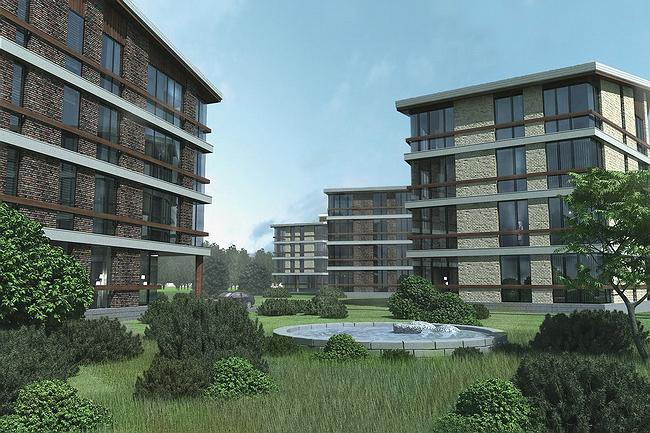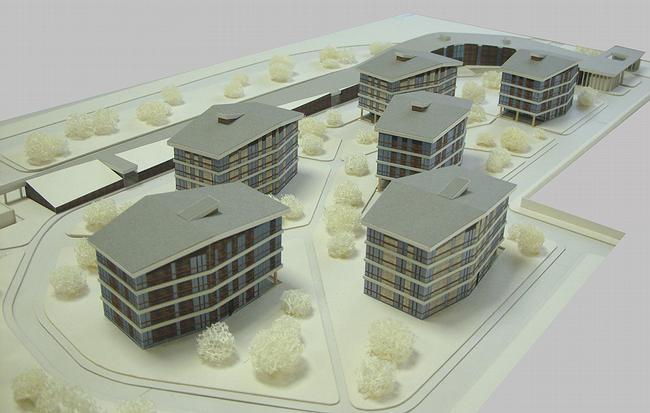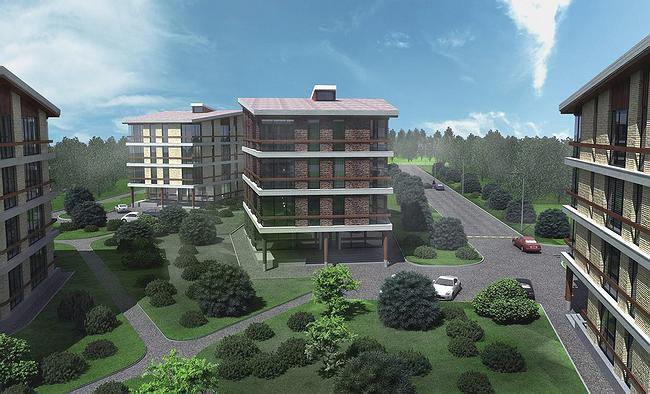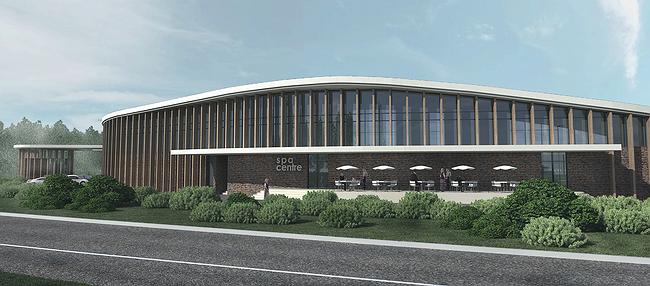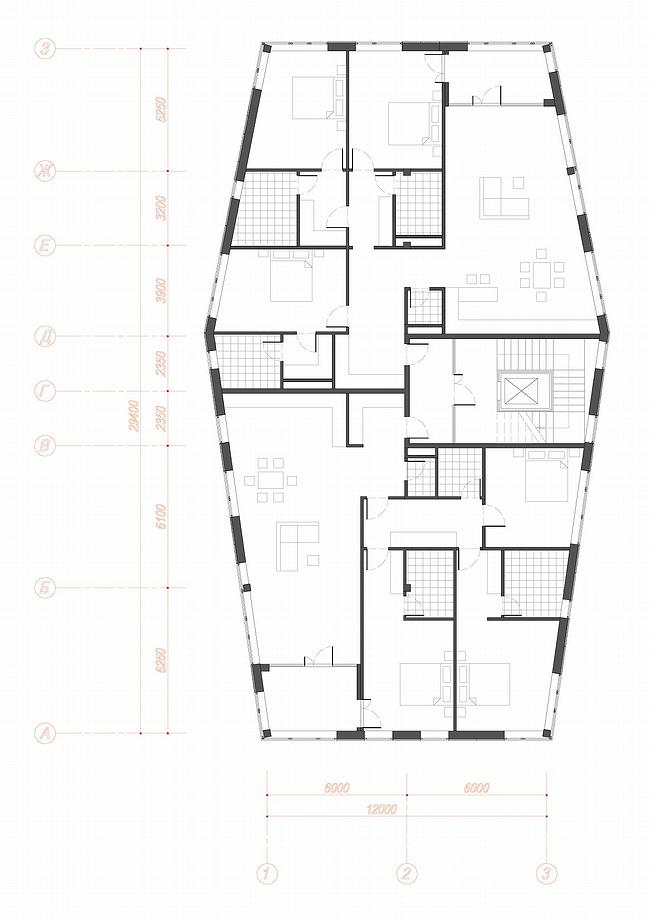The residential complex is located in Krasnogorsky district of nearby Moscow region, by Pozdnyakovo village, not far from Novorizhskoye highway. It will continue the cottage development of large site owned by a developer and will become a kind of “fire wall” protecting the private houses from the neighboring route. At the same time the new complex will be a fine sign for those who head for cottages, a sight of the village.
However, it is designed as an independent project. Its houses are separated from the highway by a public space block, transformed by the architects into a hill growing large towards the driveway of the complex. Within the hill there are cafes, shops, a fitness-centre and a swimming pool, and under the hill there is a car-parking, so there will be no “excavations” done on the territory. This in it turn allows planting trees with full root systems – and this is complicated to be done on a roof of a car-parking. The buildings will serve not only dwellers of the complex and the neighboring cottage settlement, but “outer” visitors. Therefore, one of the main problems of modern Russian countryside development practice is solved – the inner infrastructure will have a chance to be paid off.
Over the service “fence” there are six 4-storey houses (each has 10-11 apartments of 90-170m2). The arrangement is specified by the wish to create a lively cozy environment on a small, but attractive site. The authors have slightly changed the standard rectangular outline, they broke the long sides and made them more streamlined. So, the houses do not bother each other – the lines of influence onto surrounding slip by. As a result, on the master-plan the houses look like a small fish stock in an aquarium. It is an advantage that this type of cottage settlement does not suppose any inner fencing and the space remains uniform. The similarity is maintained by the random arrangement of constructions – each one is slightly turned against the line of the route, and among them appear picturesque small gardens for recreation and children playgrounds with fountains, benches and greenery. But there are no isolated private yards – this is a typical town-garden. And all the houses, except one, have view to the natural forest. Living-room windows of the four of them look this very side.
A slope roof and 2-3 apartments for a storey make the constructions very close to a “cottage” image or to the style called by developers “chalet”. Though the alternating of solid and glass verticals on facades are seen as part of the forest, adding to the complex natural look despite its location on the open area. As if the architects have positioned the houses right among trees, fixed floor slabs there, tied them up with the stripes of wooden walls and covered the gaps among trees’ bodies with glass to protect from the wind. The impression is stronger when see the variant when solid surfaces are faced with dark brick. Well, it is not known so far which of the variants will be realized - maybe, to vary the environment, the houses will be different and there will appear an image of “mixed forest” – pines and birches. However, in the infrastructure hill this decorative idea is maintained by the wooden lamels that turn it into a kind of “underwood”. Displaying them the architects took into account how the hill-fence is seen when driving towards the complex (there are no other convenient ways to get there) – the lamels are more frequent towards the entrance.
By the Panakom’s site there is being designed another mid-rise buildings complex by the studio “Proekt Megan” and also the project “Rublevskoe predmestie”, really, soon there may appear a town, and the new residential accommodations will have the role of districts there.

